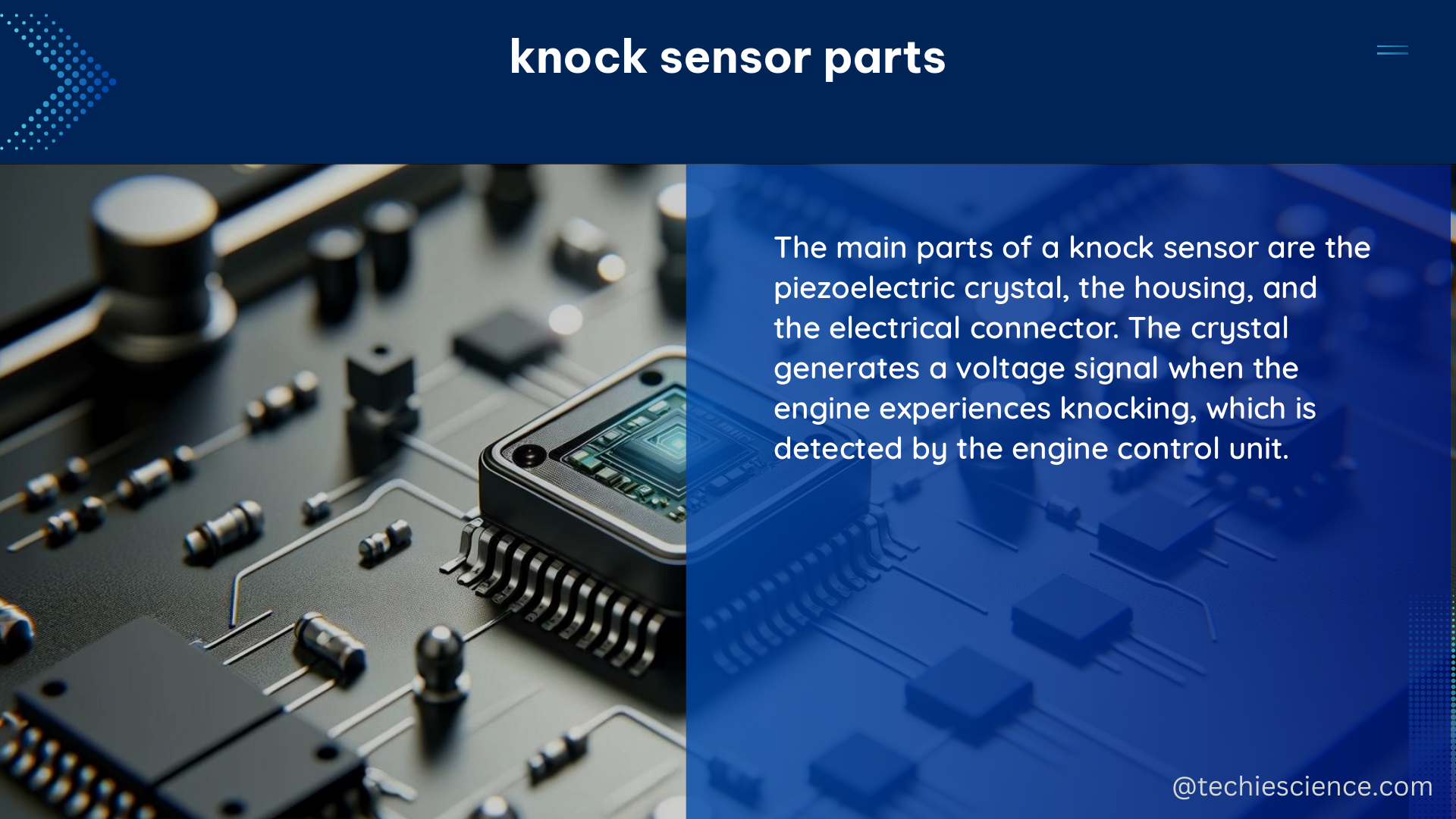Knock sensors are critical components in modern engines, responsible for detecting engine knocking or detonation and providing feedback to the Engine Control Module (ECM) to adjust ignition timing and fuel injection, preventing engine damage. This comprehensive guide delves into the technical details and specifications of knock sensor parts, equipping you with the knowledge to diagnose and troubleshoot issues effectively.
Knock Sensor Resistance Range
One of the key specifications to consider when dealing with knock sensor parts is the resistance range. Knock sensors should have a resistance within the range of 93-107 kilo-ohms (kΩ). This resistance can be measured using a digital multimeter (DMM) set to the 400kΩ scale.
To measure the knock sensor resistance, follow these steps:
- Locate the knock sensor on the engine, typically near the cylinder block or cylinder head.
- Disconnect the knock sensor connector from the wiring harness.
- Set your DMM to the 400kΩ scale.
- Place the positive (red) probe on one terminal of the knock sensor and the negative (black) probe on the other terminal.
- The DMM should display a resistance value within the 93-107kΩ range for a properly functioning knock sensor.
If the resistance is outside this range, it may indicate a faulty knock sensor that requires replacement.
Knock Sensor Voltage Output

In addition to the resistance range, knock sensors also produce a variable voltage output that can be measured using a DMM set to the AC voltage scale. When tapping on the engine near the appropriate knock sensor, you should observe minor voltage spikes that quickly return to zero.
To measure the knock sensor voltage output:
- Locate the knock sensor on the engine.
- Disconnect the knock sensor connector from the wiring harness.
- Set your DMM to the AC voltage scale, typically the 20V or 200V range.
- Place the positive (red) probe on one terminal of the knock sensor and the negative (black) probe on the other terminal.
- Gently tap on the engine near the knock sensor and observe the voltage readings on the DMM. You should see small voltage spikes that quickly return to zero.
If the voltage output is not as expected or if there are no voltage spikes, it may indicate a problem with the knock sensor or the associated wiring.
Knock Sensor Diagnostic Steps
When diagnosing knock sensor issues, there are several steps you can take to identify the root cause:
-
Circuit Testing: Test the circuit between the Powertrain Control Module (PCM) and the knock sensor connector for an open, short to voltage, or short to ground. Use a DMM to measure the resistance and voltage at various points in the circuit.
-
Connector Inspection: Ensure that the knock sensor connector is properly seated and that there are no signs of corrosion or damage.
-
Sensor Inspection: Visually inspect the knock sensor for any physical damage, such as cracks or signs of wear. If the sensor appears to be in good condition, you can test it using the resistance and voltage output methods mentioned earlier.
-
Bypass Testing: In some cases, it may be necessary to bypass the knock sensor entirely. This can be done using a piezo transducer, which can mimic the voltage output of the knock sensor. This can be a useful troubleshooting step when dealing with false knock sensor codes or other issues.
Aftermarket Knock Sensor Options
If you’re looking for a replacement knock sensor or need to upgrade your existing one, there are several aftermarket options available:
| Brand | Part Number | Description |
|---|---|---|
| WVA | WVA-KS001 | Knock Sensor Harness |
| NTK | OZA589-EE1 | Aftermarket Knock Sensor |
| Bosch | 0 261 231 118 | Aftermarket Knock Sensor |
| Denso | 234-4023 | Aftermarket Knock Sensor |
These aftermarket options can often be more affordable than the original equipment manufacturer (OEM) parts, while still providing reliable performance.
Conclusion
Knock sensor parts play a crucial role in modern engine management systems, helping to prevent engine knocking and detonation. By understanding the technical specifications, diagnostic steps, and available aftermarket options, you can effectively troubleshoot and maintain your vehicle’s knock sensor system. Remember to always refer to the manufacturer’s recommendations and follow proper safety procedures when working on your vehicle.
References:
– LS1Tech Forum – Fixed Knock Sensors Still Read Code
– Honda-Tech Forum – Knock Sensor Bypass Methods & Part Numbers
– Corvette Forum – Knock Sensor Code
– Club Lexus Forum – Knock Sensors

The lambdageeks.com Core SME Team is a group of experienced subject matter experts from diverse scientific and technical fields including Physics, Chemistry, Technology,Electronics & Electrical Engineering, Automotive, Mechanical Engineering. Our team collaborates to create high-quality, well-researched articles on a wide range of science and technology topics for the lambdageeks.com website.
All Our Senior SME are having more than 7 Years of experience in the respective fields . They are either Working Industry Professionals or assocaited With different Universities. Refer Our Authors Page to get to know About our Core SMEs.